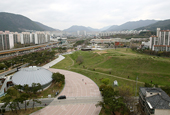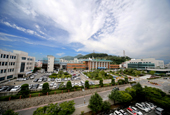There are not many cities that are linked by three expressways, harbors and an international airport, all in close proximity to each other.
Gimhae, in Gyeongsangnam-do (South Gyeongsang Province), is a transportation hub for East Asia and it is located midway between China and Japan, both major Korean trading partners. Gimhae is close to the Gimhae International Airport, the Busan Harbor, the Masan Harbor, the Busan New Port and the Gyeongbu Railway that connects Seoul and Busan. It is a strategic location that connects outward to the Asia and Pacific regions.
Gimhae is a 20-minute drive from Gimhae International Airport and from Gupo Station on the KTX line, and a 30-minute drive from Busan, the country's biggest port. From Gimhae International Airport, there are flights bound for Japan and China every day, and for major Southeast Asian cities, too. In addition, there are the Namhae Expressway, the Daegu-Gimhae Expressway and the Buma Expressway, and eight interchanges nearby. The expressways are within 10 minutes of any point in the city.
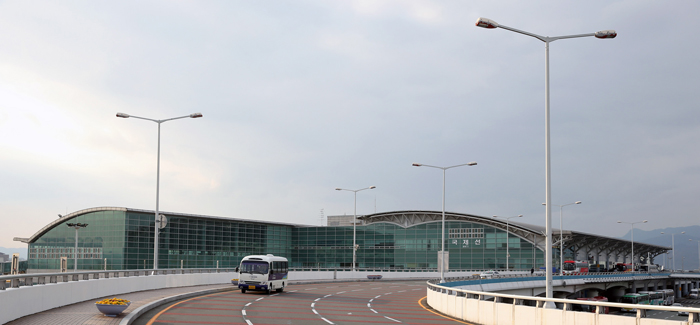
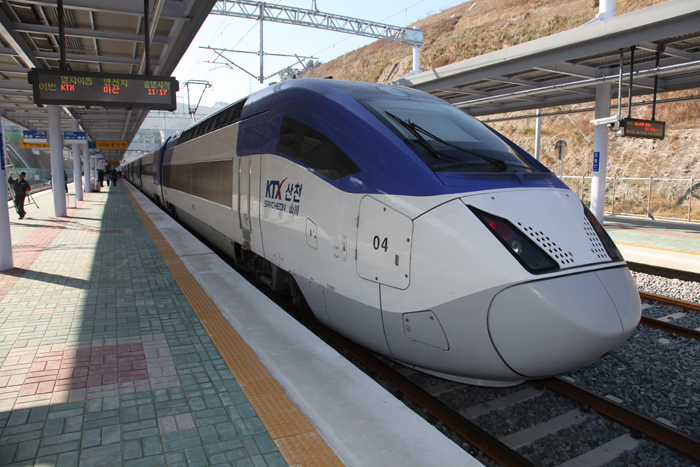
Gimhae is bordered by Busan and Changwon cities, and within a one-hour drive of Gimhae there are large metropolitan cities like Daegu and Ulsan, home to over 10 million people. The geographic advantages make it easy for employers to find workers.
With such a favorable business environment, the number of companies in Gimhae increases yearly by some 150 new businesses. The city has grown into an industrial city with 7,000 small- and medium-sized enterprises (SMEs), and the number is considered to be the largest number in the country.
Gimhae plans to establish a business center for SMEs in the second half of the year to support companies and the 100,000 workers they employ in the city. When it opens, it will be the first in Gyeongsangnam-do. There will be a machinery technology certification center opening next year to check whether machines operate properly in extremely low temperatures, and this center will provide technological support for companies involved in shipbuilding, marine engineering and in making precision mechanical parts.
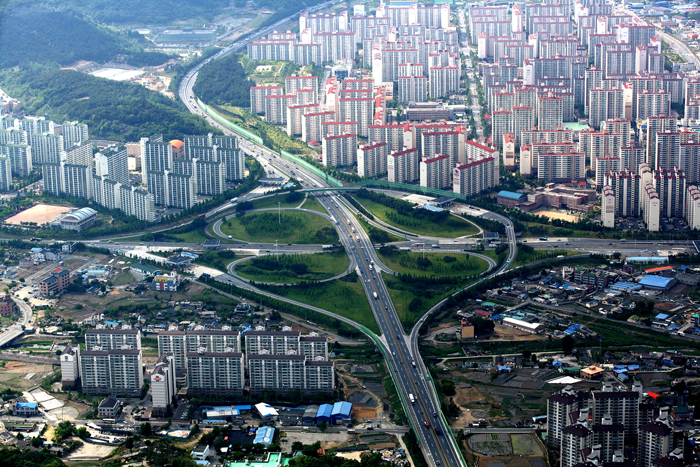
Due to its advantages in terms of transportation, geography and access to human resources, many industrial parks are being developed across Gimhae, one after the other. Already there are eight agricultural and industrial parks and four general industrial parks. There are four new industrial complexes under construction, including the Gimhae Techno Valley.
The Gimhae Techno Valley, which covers 5.94 square kilometers, will be completed in the latter half of this year. The complex is adjacent to the Namhae Expressway and is considered to be one of the best locations for an industrial complex, in terms of logistics.
When the Busan Outer Circular Expressway is completed in 2017 and a second expressway to Busan New Harbor is completed in 2018, the Gimhae Techno Valley is expected to become the industrial heart of Gyeongsangnam-do.
Due to its proximity to the Gimhae International Airport and to the Busan New Harbor, non-Korean companies are entering the city one after the other. A data center for Japan-based Softbank opened in the Gimhae KT Training Center in 2011. Another Japanese company, Kuroda Electric, and 20 of its subcontractors are also going to move into the Science Park, an industrial park set aside for overseas companies.

Short-distance transportation, such as the Busan-Gimhae Light Rail Transit line, has been completed and a new bus terminal opened recently. The Busan-Gimhae Light Rail Transit line, opened in 2011, connects Busan and Gimhae International Airport. It plays a key role in regional transportation. The Gimhae Bus Terminal, opened in February, has four floors above ground and covers floor space of some 12,845 square meters.
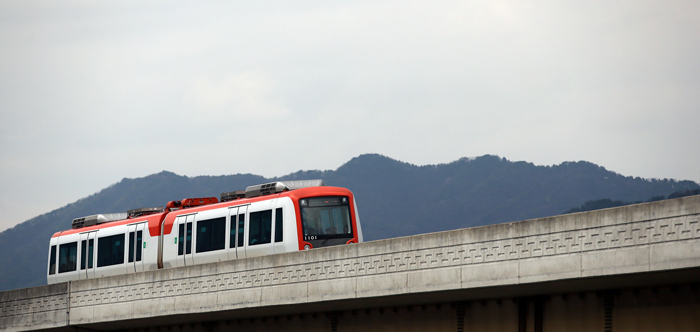
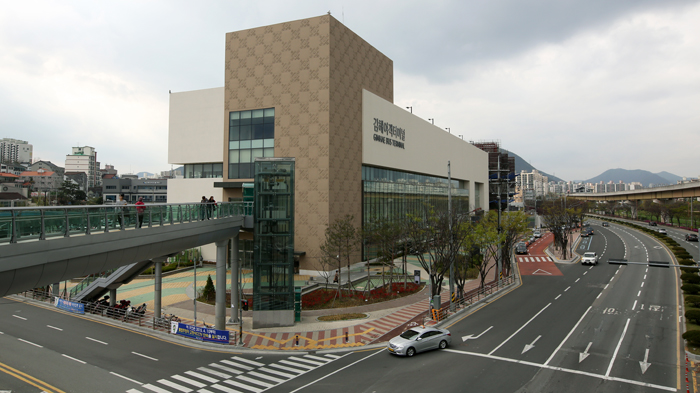
By Limb Jae-un
Korea.net Staff Writer
Photos: Jeon Han, Gimhae City
jun2@korea.kr
Gimhae, in Gyeongsangnam-do (South Gyeongsang Province), is a transportation hub for East Asia and it is located midway between China and Japan, both major Korean trading partners. Gimhae is close to the Gimhae International Airport, the Busan Harbor, the Masan Harbor, the Busan New Port and the Gyeongbu Railway that connects Seoul and Busan. It is a strategic location that connects outward to the Asia and Pacific regions.
Gimhae is a 20-minute drive from Gimhae International Airport and from Gupo Station on the KTX line, and a 30-minute drive from Busan, the country's biggest port. From Gimhae International Airport, there are flights bound for Japan and China every day, and for major Southeast Asian cities, too. In addition, there are the Namhae Expressway, the Daegu-Gimhae Expressway and the Buma Expressway, and eight interchanges nearby. The expressways are within 10 minutes of any point in the city.


Gimhae International Airport (top) and the KTX railway station are some of the major transportation points near Gimhae.
Gimhae is bordered by Busan and Changwon cities, and within a one-hour drive of Gimhae there are large metropolitan cities like Daegu and Ulsan, home to over 10 million people. The geographic advantages make it easy for employers to find workers.
With such a favorable business environment, the number of companies in Gimhae increases yearly by some 150 new businesses. The city has grown into an industrial city with 7,000 small- and medium-sized enterprises (SMEs), and the number is considered to be the largest number in the country.
Gimhae plans to establish a business center for SMEs in the second half of the year to support companies and the 100,000 workers they employ in the city. When it opens, it will be the first in Gyeongsangnam-do. There will be a machinery technology certification center opening next year to check whether machines operate properly in extremely low temperatures, and this center will provide technological support for companies involved in shipbuilding, marine engineering and in making precision mechanical parts.

There are three expressways, including the Namhae Expressway, and eight interchanges in or near Gimhae, and freight transportation is very convenient.
Due to its advantages in terms of transportation, geography and access to human resources, many industrial parks are being developed across Gimhae, one after the other. Already there are eight agricultural and industrial parks and four general industrial parks. There are four new industrial complexes under construction, including the Gimhae Techno Valley.
The Gimhae Techno Valley, which covers 5.94 square kilometers, will be completed in the latter half of this year. The complex is adjacent to the Namhae Expressway and is considered to be one of the best locations for an industrial complex, in terms of logistics.
When the Busan Outer Circular Expressway is completed in 2017 and a second expressway to Busan New Harbor is completed in 2018, the Gimhae Techno Valley is expected to become the industrial heart of Gyeongsangnam-do.
Due to its proximity to the Gimhae International Airport and to the Busan New Harbor, non-Korean companies are entering the city one after the other. A data center for Japan-based Softbank opened in the Gimhae KT Training Center in 2011. Another Japanese company, Kuroda Electric, and 20 of its subcontractors are also going to move into the Science Park, an industrial park set aside for overseas companies.

The Golden Route General Industrial Park in Gimhae is one of the many industrial sites spread across the city.
Short-distance transportation, such as the Busan-Gimhae Light Rail Transit line, has been completed and a new bus terminal opened recently. The Busan-Gimhae Light Rail Transit line, opened in 2011, connects Busan and Gimhae International Airport. It plays a key role in regional transportation. The Gimhae Bus Terminal, opened in February, has four floors above ground and covers floor space of some 12,845 square meters.

The Busan-Gimhae Light Rail Transit line opened in 2011. It quickly connects Gimhae and Busan.

The Gimhae Bus Terminal opened in February and is expected to become the transportation and commercial center of the city.
By Limb Jae-un
Korea.net Staff Writer
Photos: Jeon Han, Gimhae City
jun2@korea.kr
